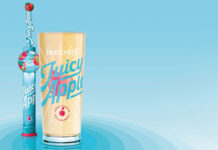A diverse vodka range is a must for any bar, say drinks firms
UNLIKE some drinks categories, which can see demand spike during certain seasons, vodka’s popularity is deemed pretty stable all year round.

But now the ‘craft movement’ is said to be making moves on this cornerstone category, meaning it’s important licensees pay even more attention to the vodkas they are stocking.
With the right range, operators can fully capitalise on vodka’s versatility as well as its growing presence at the craft end of the market, drinks firms told SLTN.
Dan Warner of The 86 Company, the firm behind Aylesbury Duck Vodka, said that while some traditional vodka drinkers have migrated to spirits such as gin, he believes there is a growing interest in “smaller, unique vodkas moving into the market, that are reigniting consumer interest in vodka”.
Taking a similar stance was PJ Laurre, brand ambassador for Crystal Head Vodka. He has observed operators “extending the range of vodka on their back-bars but choosing vodkas on the basis of style and profile”.
And it is this change that has bolstered the craft vodka trend, according to Laurre.
He said the perception of vodka “has also changed over the last few years and people’s palates have changed too”.
For licensees looking to expand or introduce a range of craft vodkas, Laurre advised that the main points of consideration should be the ingredients, the finish, and the locality.
And when introducing new vodka brands to the back-bar, Warner of The 86 Company warned that “a higher price tag doesn’t necessarily mean better [quality]”.
He explained that “quality is what sells and so you need to know the spirits you are selling”.
In order to successfully tap into the craft sector, operators must equip staff with the necessary knowledge.
“Training, tastings and masterclasses with their teams is a very important factor,” said Laurre of Crystal Head Vodka.
Invoking the old adage of “knowledge is power”, Laurre said being able to talk at length about different brands “gives [staff] the confidence to talk to the customer about a product when trying to upsell”.
Craft still accounts for a comparatively small share of sales, however; and drinks firms highlighted the importance of stocking a broad spectrum of spirits.
Adam Boita of Pernod Ricard UK, the firm behind Absolut, said there are ‘key indicators’ operators should bear in mind when switching up their range.
“Vodka is currently classed as standard, premium and super-premium,” he said.
“Secondly, vodka can either be classed as ‘new’ or ‘old world’. As a rule, new world vodkas are more neutral, whereas old world vodkas are more sophisticated with a textured feel in the mouth. Finally, a range wouldn’t be complete without a selection of flavoured vodkas to create a plethora of interesting cocktails for all types of occasions.”
Vodka’s use as a base for cocktails was also highlighted by Scott Dickson, marketing manager at Loch Lomond Group, the firm behind Glen’s Vodka.
“Summer sees a general increase in vodka sales as the liquid continues to be one of the most popular ingredients across cocktails,” he said.
And when it comes to boosting sales of vodka-based cocktails, Laurre of Crystal Head Vodka said fun serves can help pique customers’ interest.
For example, he said deconstructed serves – in which customers’ make their own cocktail at the table – “are a great way for operators to further bolster their sales over summer”.
























